Hyundai Tucson: Rear Outside Combination Lamp
Hyundai Tucson - Fourth generation (NX4) - (2020-2023) - Workshop Manual / Body Electrical System / Lighting System / Rear Outside Combination Lamp
- Disconnect the negative (-) battery terminal.
- Loosen the mounting bolts then remove the outside rear combination lamp (A).
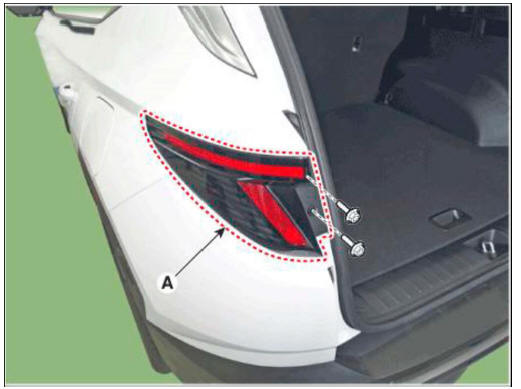
- Disconnect the rear combination lamp connector (A).
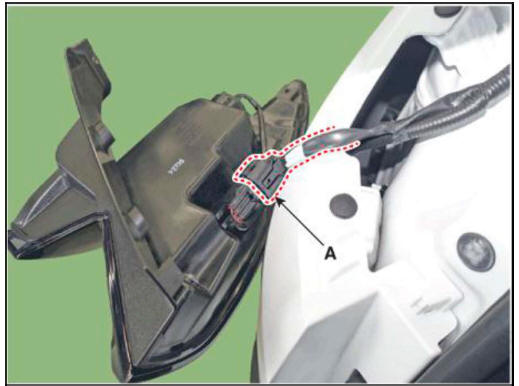
- Remove the bulb after turning it in the counter clock-wise direction.
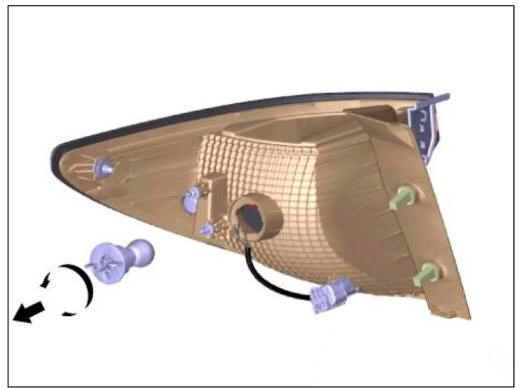
Rear Inside Combination Lamp
- Remove the tail gate lower trim.
(Refer to Body - "Tail Gate Trim")
- Disconnect the rear inside combination lamp connector (A).
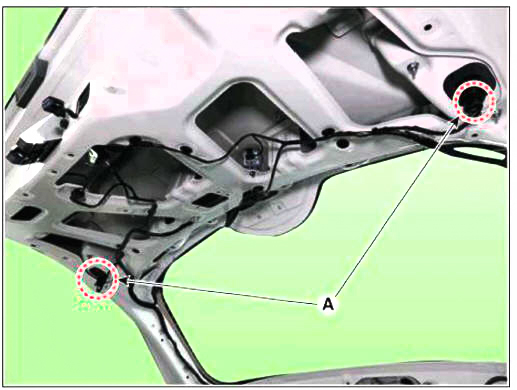
- Disconnect the rear view camera connector (A).
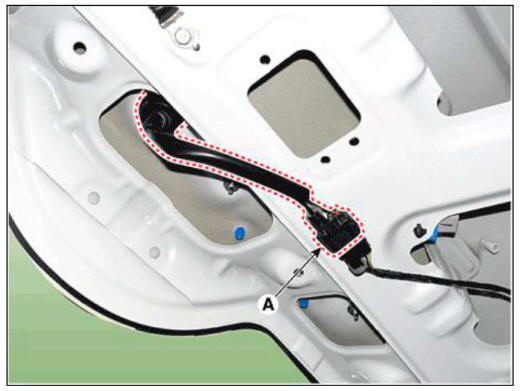
- Loosen the mounting nuts and remove the rear inside combination lamp (A).
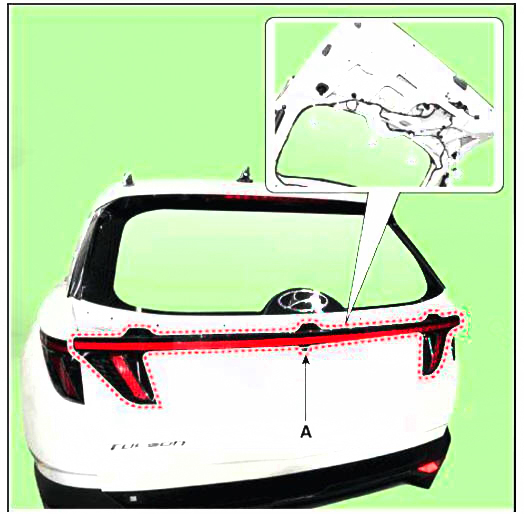
Installation
Rear Outside Combination Lamp
- Connect the rear outside combination lamp connector.
- Install the rear outside combination lamp.
- Connect the negative (-) battery terminal.
Rear Inside Combination Lamp
- Connect the rear inside combination lamp connector.
- Install the rear inside combination lamp.
- Install the tail gate back pane molding.
- Connect the negative (-) battery terminal.
Removal
- Disconnect the negative (-) battery terminal.
- Disconnect the daytime running light connector (A).
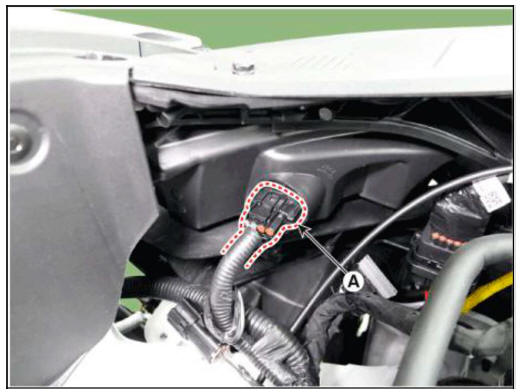
- Loosen the mounting bolts and remove the daytime running light (A).
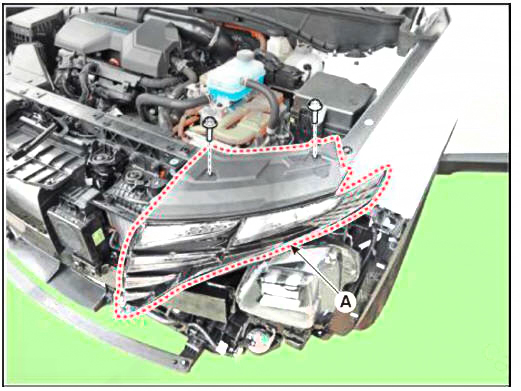
Installation
- Install the daytime running light and connect the connector.
- Connect the negative (-) battery terminal.
READ NEXT:
 Rear Occupant Alert
Rear Occupant Alert
Description
The system detects the passenger in the vehicle and prevents the driver from
getting off the vehicle with the passenger in the
1st warning: If you open the driver's door after you open and then close
the rear passenger and t
 TP Read Protocol
TP Read Protocol
Description
The immobilizer system will disable the vehicle unless the proper ignition
key is used, in addition to the currently available antitheft
systems such as car alarms, the immobilizer system aims to drastically reduce
the rate of auto
SEE MORE:
 Door Outside Handle
Door Outside Handle
When removing with a flat-tip screwdriver or remover, wrap protective
tape around the tools to
prevent damage to components.
Put on gloves to prevent hand injuries.
Remove the door outside handle cover (A)
Remove the plug ho
 System Configuration Diagram
System Configuration Diagram
Instrument cluster : Alerts about contact with mobile phone
IBU unit: Determines contact with mobile phone
Wireless charging lamp : Displays the charging status
SMK unit: Stops charging during the activation of LF
Major Functions of W
Information
- Home
- Hyundai Tucson - Fourth generation (NX4) - (2020-2023) - Owner's Manual
- Hyundai Tucson - Fourth generation (NX4) - (2020-2023) - Workshop Manual